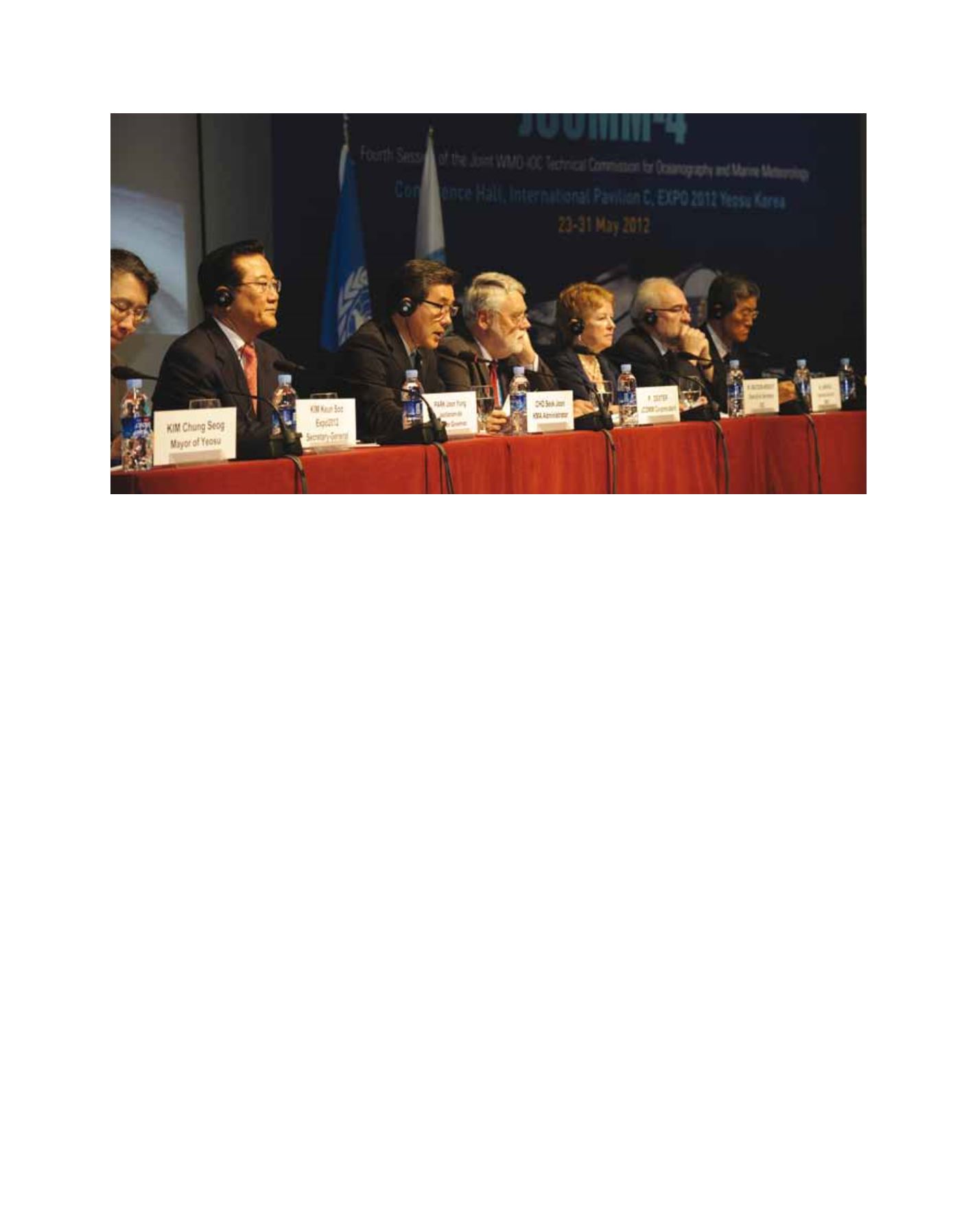

[
] 41
A
griculture
GISC-Seoul will make it possible to supply real-time information
that is essential to responses against climate change, and to obtain
worldwide weather and climate data for weather forecasts and climate
change research in real time. As a result, it will contribute to producing
future weather and climate information. KMA is planning to establish
a standard operation system for the stable exchange of weather data,
to step up support for data collecting and producing centres at home
and abroad, and to implement more advanced operation of the centre.
Use of Climate Science Information
Should we be able to make accurate predictions on abnormal climate
phenomena that will happen in the future in terms of spatial and tempo-
ral distribution and intensity, those predictions would greatly contribute
to disaster prevention as well as reducing social and economic losses.
Using climate science information is the right way to make it happen.
Taking advantage of climate science information, farmers are
choosing the appropriate crops and seeding period suitable for the
new climate environment while fishermen are preparing for the
proper fishing instruments fit for the newly-emerging fish. With the
help of climate science information, companies are making efforts
to reduce cost and improve added value in the whole process from
production to marketing that includes supply and demand of raw
materials, production, stock management, promotion and distribu-
tion of products, and the development of new products.
Long-range forecast information provided by KMA are usually
used for predicting fruit quality, crop yields and biological seasons
such as time of blossoming and harvest, and expecting blight
occurrence. In case of abnormal low temperature in spring, fruits’
blossoming period would be delayed. And the delay would make
the fruits grow belatedly. However, weather conditions during the
growing period can somewhat compensate the delayed growth
driven by the prolonged blossoming period since fruits have long
growing period. Therefore, long-range forecast information in three
or five months is being utilized to predict the condition of crop.
Technology and information sharing for a better future
Climate services refer to providing essential climate data and
information to users in the public and private sectors who
are responsible for decision-making in a range of climate-
related areas including economic, social and cultural fields.
KMA has set up the climate service system and
provided customized information suited to differ-
ent regions by producing climate change scenarios,
operating the WMO LC LRFMME, and hosting GISC-
Seoul. In addition, KMA carries out education and
training programmes to help users make full use of
climate science and services, and manages a system
for better communication among producers and users
of climate information.
In particular, given that the general public without
special knowledge on weather and climate may
have difficulties in understanding the characteris-
tics and uncertainty of climate and harnessing such
services, a policy is promoted to allow weather and
climate experts to work at power exchanges or local
organizations as meteorological advisors. In this role,
they would play not only offer relevant information
produced by KMA, but also explain the implications
and give consultations to officials in order to help
them predict energy demand in advance.
KMA will develop and upgrade the climate serv-
ices in relation to the newly proposed WMO Global
Framework for Climate Services. This work will be
based on KMA’s current infrastructure and capacity as
described above. Such efforts will enhance the climate
change response capabilities of countries around the
world including Korea, thereby protecting life and
property, reducing financial losses and fostering oppor-
tunities to generate profit.
Fourth session of the Joint WMO-IOC Technical Commission for Oceanograph and Marine Meteorology (JCOMM) (Yeosu, Republic of Korea, 23-31 May 2012)
Image: KMA
















